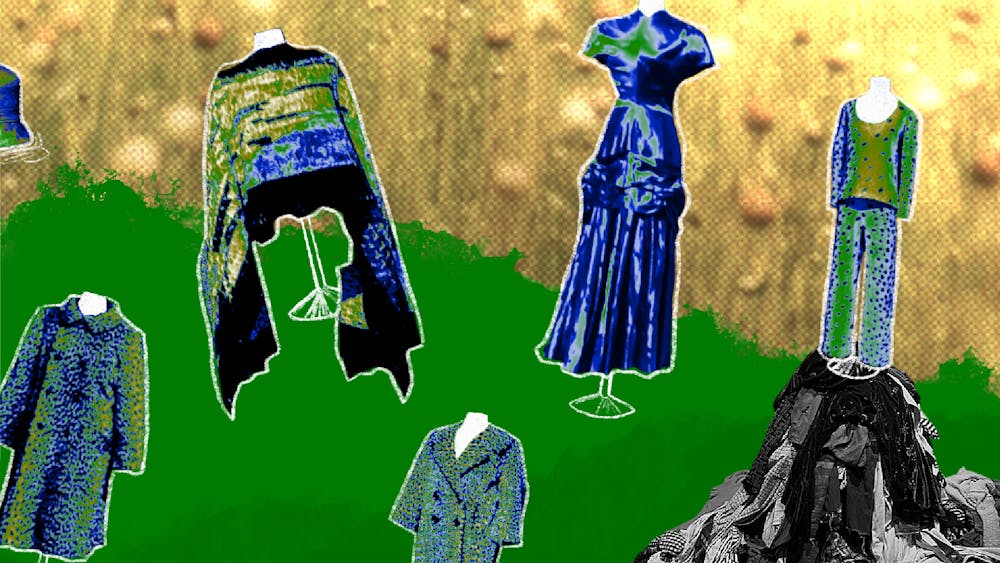One day before spring break, during which I would be headed to New York and Mexico City—two internationally renowned museum cities—I had to make one last pit stop in my home base. Philadelphia is filled with heavy hitters itself, and I was excited to check out a new one: The Academy of Natural Sciences of Drexel University. I wouldn’t just see the typical dinosaur bones and savanna tableaus, but also one of my true loves, fashion, in the museum’s Ecology of Fashion exhibit. Maybe my expectations were too high after hearing “fashion,” but I have never been more offended by a museum before in my life.
Before even discussing the exhibit, I’ll have to start with the walk through the museum to get there. At the ticket office, I was a victim of daylight robbery. For a city filled with students, why was the student ticket price only 10% off when the tickets themselves were $30 apiece? This price discrimination at the get–go put me in a bad mood before I even saw any of the artifacts. After a grindingly slow three–story elevator ride, my friend and I had to wade through hallways of fading taxidermy—their haunting “memento mori” diorama stares felt a little on the nose—before we approached where the Ecology of Fashion exhibition was supposed to be. In a corner that looked like a dead end, filled with only some stuffed pandas and a plain bench, the only indication there might be something to be found was some royalty–free pop music playing out of a blank wall. There were no signs anywhere in the quite massive museum for what was where, including this exhibit (more on that later).
Following that perverse siren song, we were presented with a TV showing Drexel’s Department of Fashion, Product Design, and Design and Merchandising’s annual Garbage Gala. The designs presented were genuinely really inspiring student work, laying faith in the avant–garde sensibilities of the wonderful fashion students working there. Despite these displays of possible generational talent, we were worried this was the whole thing. Paying $26 for a TV show would have been a true slap in the face. Instead, they shelled out their library, all the way at the back of the museum, further alienating students wanting to study there, and placed a very silly show.
First, in a museum mainly targeted to (apparently rich) children, there was an overreliance on very long, bland, unhelpful wall text. As we’re taught in my curatorial seminar, a good didact keeps itself under 60 words. You start with something very interesting to catch the many museumgoers who by and large feel like looking above reading—the average patron only looks at an object on display for 27 seconds before moving on. Instead, vast swaths of otherwise empty wall space were covered in what could almost have been AI–generated paragraphs. Phrases like “throughout history” appearing twice or references to “groups of women” did not narrow anything down. It was not only unhelpful to the viewer, but also underwrote the chief aspect of a museum: to educate.
The exhibit was incredibly sparse. Despite taking up an entire wall of real estate, the “Murderous Millinery” section only had two objects. The fiber section had one bundle hanging between more of the burgeoning unnecessary text blocks. The synthetics section had a gap between the mannequins, as if inviting us to imagine a fourth garment. With Drexel having one of the most complimented costume archives, it was almost pitiful to see how few clothes they chose to display.
All that being said, there were some smart choices. I enjoyed how they activated the different Drexel archives, combining Jacqueline Kennedy’s leopard coat with an actual taxidermied leopard or juxtaposing an ornate bird with a hat made of the same creature. They even used technology well, providing child–level touch screens with pertinent information.
The smart choices came only in pockets, however, with intriguing and fleshed–out cases contrasting heavily with the main displays. Learning about murex, kermes, and cochineal with their physical and dyed counterparts or viewing buttons beside the tortoises and mollusks they came from felt like actual illumination. It left me with something to ponder and provided me with new information, something I felt most of the other displays lacked. It was almost as if somebody did not consult the individual pieces together. Based on the work exhibited on the TV outside, however, I know Drexel can do better. I hope to see what that could be.

